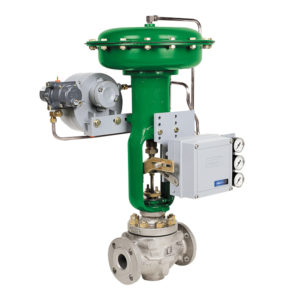Control Valve Maintenance and Repair Tips
Automation Service Control Valve Maintenance Program
Taking care of your control valves requires routine maintenance and servicing. In fact, every part of each type of valve in your applications requires its own customized maintenance plan. Sometimes this maintenance should happen daily, and sometimes it should be part of a preventive maintenance program, or part of a larger scale plant turnaround; how frequently your valve needs maintenance will depend on the severity of service and how critical the application is.
Here are five control valve tips every maintenance planner should know about.
- Valve packing needs to be visually inspected for leaks on a regular basis. Since you don’t know when packing is going to start leaking, be vigilant to detect early signs of leaking so once it does start, you’ll be able to address it right away. If discovered early enough, often times packing can be tightened to reseal the process and extend the time until the next service cycle. You should also consider a complete replacement with new packing rings about once a year or two. Occasionally, you will also need to visually inspect the packing box walls, but for most applications, this doesn’t need to happen every year.
- To maintain your air set, or supply regulator, you should blow down moisture and impurities as needed on a daily, weekly, or quarterly basis. You should also inspect or replace your filter media and diaphragm on an annual basis, though in some applications this could be done less frequently.
- Whether you have an I/P transducer or valve positioner, some routine maintenance is necessary. For critical processes, check the valve stroke and calibrate the I/P transducer or valve positioner on a quarterly or semi-annual basis. For all other applications, this can be done annually or even less frequently.
- You actuator doesn’t require frequent maintenance. Once a year, or as appropriate, inspect the diaphragms, piston rings, and end seals. At this time you should also lubricate any piston type actuator cylinders and the O-rings. Your actuator shouldn’t require much more maintenance than that!
- Valve trim also requires infrequent maintenance. For critical processes, you should visually inspect the trim and replace elastomer trim components and metal seats on a yearly basis. For other applications, you can extend that out further, or replace trim on an as-needed basis.
Use these five tips to help you create your customized maintenance plans. By keeping your valves maintained and operating well between turnarounds, you will be able to protect your plant from unplanned, costly, and lengthy interruptions.
If you have questions or need a valve quote, call 800-325-4808.

